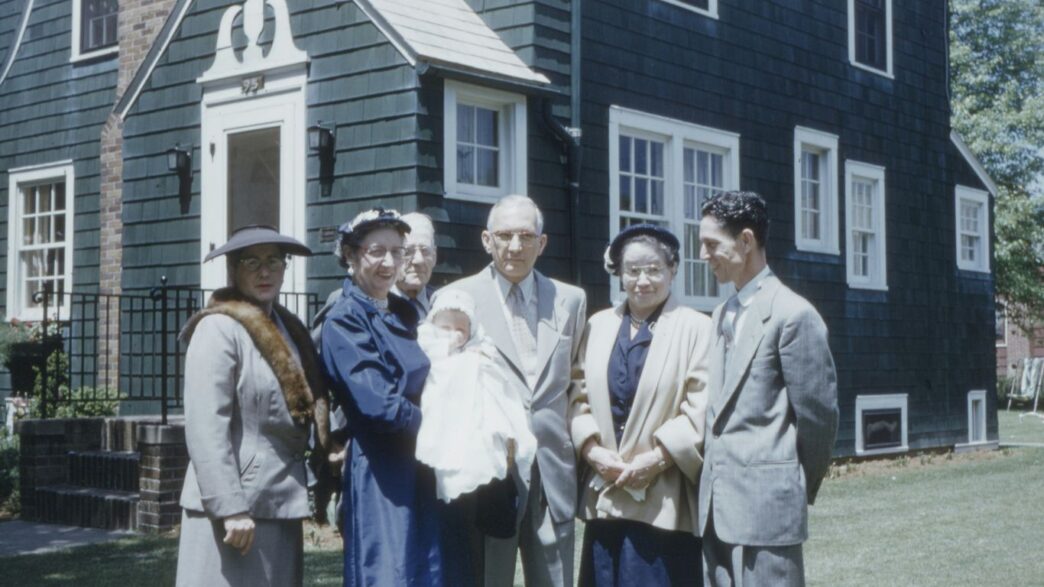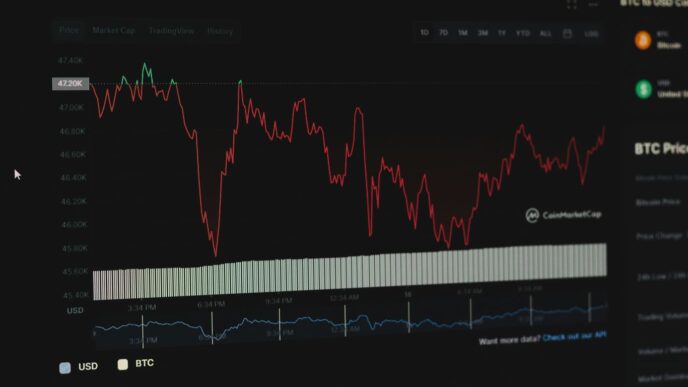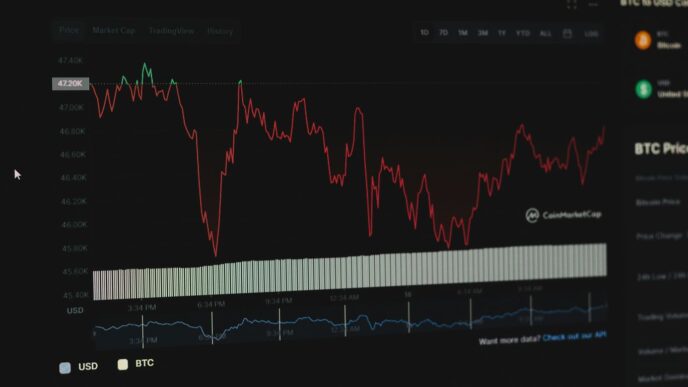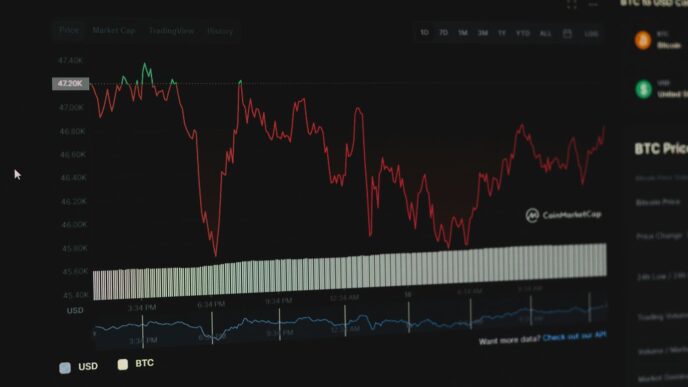Buying a home in California isn’t easy, especially for immigrants. There are new programs and bills in 2025 that could open doors for more people, but there’s still a lot of confusion and debate. The rules keep changing, and not everyone agrees about who should get help. This article looks at the latest on california immigrant home loans, what’s working, what’s not, and what might change next year. Whether you’re an immigrant hoping to buy your first home or just curious about the issue, here’s what you need to know.
Key Takeaways
- California immigrant home loans are changing, with new rules possibly allowing more undocumented immigrants to apply if they pay taxes and meet credit requirements.
- Barriers like legal status, credit history, and financial documentation still make it tough for many immigrants to buy homes, especially those in mixed-status families.
- Innovative solutions, like using ITINs, community savings groups, and counting remittances, are helping some immigrants qualify for loans when traditional methods fall short.
- Discrimination based on national origin and language barriers continues to impact loan approval rates for immigrant applicants, even as some programs try to address these issues.
- Policy debates about funding, eligibility, and fairness are ongoing, with new laws like Assembly Bill 1840 set to shape who can access home loans in California in 2025.
Understanding California Immigrant Home Loans in 2025
Key Features of the California Dream for All Program
The California Dream for All Shared Appreciation Loan is a special type of no-interest loan, helping first-time buyers cover up to 20% of a home’s value, with a cap of $150,000. Borrowers make no monthly payments on this loan. Instead, when they sell or refinance, they pay back the original loan plus 20% of the home’s appreciated value.
What’s different about this program is its focus on supporting low- and middle-income families, allowing more buyers to secure a down payment and enter the housing market. The state initially set aside $300 million, which helped about 2,200 families, and then added $225 million to reach approximately 1,700 more. More details about who’s eligible are set in yearly state updates. The way funds are distributed isn’t first-come, first-served anymore; applications are now managed more equitably if funds run out early. For more context, the program’s structure also attempts to match borrowing limits to local housing prices, so areas like Los Angeles and Orange Counties have different income cut-offs.
| County | Max. Household Income (2025) |
|---|---|
| Los Angeles | $155,000 |
| Orange | $204,000 |
| Ventura | $198,000 |
Eligibility Criteria and Required Documentation
To apply, homebuyers must fit several requirements:
- Be a first-time buyer (i.e., haven’t owned a home in the last seven years).
- Earn less than 120% of the area’s median income.
- Use the purchased home as their primary residence within 60 days.
- File taxes in California—this includes people with a Social Security Number or, in some cases, an Individual Taxpayer Identification Number (ITIN).
At least one buyer in a group purchase must be a first-generation homebuyer (this includes children of non-homeowners as well). Buyers will need to provide proof of income, tax returns or W2s, and identification documents. For mixed-status households or immigrant applicants, having documents like an ITIN or valid work permit is essential. Housing-market experts often recommend keeping these documents handy from the start, as it can make the whole process much less stressful.
Changes to Program Access for Undocumented Immigrants
Up until recently, most assistance programs excluded undocumented Californians—even those who work and pay taxes. But with Assembly Bill 1840, that’s shifted. Undocumented immigrants may now apply for the Dream for All loan if they meet a few requirements, like having an ITIN and meeting all other borrower criteria.
Some important changes for 2025:
- Explicitly includes ITIN holders; you don’t need a Social Security Number if you’re otherwise eligible.
- Clarifies that primary residency and income rules apply equally to all.
- Removes unclear legal gray areas that had blocked qualified undocumented families in the past.
Assembly debates this year were pretty heated, with some political opponents arguing the new bill gives too many incentives to recent immigrants, but supporters say expanding access just helps hardworking families buy homes. The result is a system that better matches who actually lives and works in California’s growing cities and towns.
At its core, these shifts in policy mean more Californians—regardless of documentation status—now have a fighting chance at homeownership.
Barriers Facing Immigrants in Pursuing Homeownership
The Impact of Legal Status and Mixed-Status Households
Many immigrants hoping to become homeowners in California still run into big roadblocks because of their legal status—not just their own, but sometimes a family member’s too. Mixed-status households, where some people have citizenship or green cards and others don’t, often find it confusing, stressful, and scary to start the mortgage application process.
Here are a few reasons why legal status is such a sticking point:
- Uncertain legal status causes anxiety about putting down roots. People with DACA or temporary visas might hesitate to buy, since their status can change fast.
- Undocumented immigrants can’t access most government-backed loan programs and often end up in lower paying or unstable jobs, making savings and steady income tough to maintain.
- Banks and loan officers may not know what to do with applications from households where not everyone has valid Social Security Numbers, even if most wage earners in the family file taxes.
It’s not just all-or-nothing—there are so many shades of status even within one family. All of this makes reaching for the stability of homeownership feel pretty distant for many folks who, frankly, have spent years in California, raising families and working.
Credit History and Financial Documentation Challenges
Building a solid credit history is hard enough, but for recent immigrants, the rules and paperwork are almost a maze. Many have no US credit profile when they arrive, no matter how successful they were back home. Even people who have lived here for years still fight these issues, making getting approved for a mortgage way harder than it should be.
Here’s what usually gets in their way:
- No or very thin credit files in US credit bureaus
- Hard time providing full documentation for income, since some jobs are paid in cash or outside the banking system
- Bank statements and pay stubs might not really show their full financial story, especially if they send money home or pool incomes with family
And the thing is, lenders usually play it safe. They’d rather say no than try to interpret unfamiliar paperwork, even if immigrants pay their bills every month. Having a short US credit history tanks a lot of otherwise decent applications.
Immigrant Homeownership by Country of Origin (2021)
Here’s a quick snapshot showing how homeownership rates differ by immigrant group:
| Country of Origin | Homeownership Rate |
|---|---|
| Vietnam | 73% |
| Philippines | (Data not shown) |
| India | (Data not shown) |
| Dominican Republic | 29% |
Rates swing pretty widely, and longer time spent in the US usually equals higher homeownership—but that doesn’t erase the paperwork challenge for everyone.
Housing Market Exclusion Among Undocumented Immigrants
Out of all groups, undocumented immigrants have it particularly rough when it comes to buying a home. They aren’t allowed to use most public housing programs, so renting or doubling up is really their only choice in many cases. According to numbers from 2023, just 5,000 to 6,000 mortgages got issued to people using ITINs—those tax IDs for folks without Social Security Numbers. Compare that to the 4.3 million first mortgages that same year, and you see the gap is huge.
A lot of undocumented people end up living:
- In crowded apartments, often sharing with extended family
- In neighborhoods with already existing immigrant networks
- Outside the mainstream banking system, relying on informal arrangements for housing
So, when people talk about a “housing crunch” and wonder whether new arrivals are to blame, it’s just not the reality. Most undocumented immigrants can’t buy property even if they wanted to. The system more or less shuts them out, meaning they’re mostly keeping to already crowded, affordable corners of the state, not competing broadly for new homes.
To really move forward, any policy or loan program meant for immigrant buyers has to address all these layers—not just legal paperwork, but also the trust families need to feel before they make what might be the biggest purchase of their lives. This is as much about rebuilding old systems as it is about considering emerging technologies that could make the mortgage process less frustrating and more accessible for everyone, including everyday homebuyers in California.
Innovative Financing Solutions for Immigrant Communities
Secure and affordable home loans can feel out of reach for many immigrant families in California, but new ideas are changing the picture in 2025.
The Role of Individual Taxpayer Identification Numbers (ITINs)
Many immigrants without Social Security numbers use an ITIN to file taxes. Lenders in California are starting to accept ITINs to assess mortgage applicants, making homeownership more realistic for undocumented and mixed-status households. Here’s what’s typically required:
- Valid ITIN and consistent tax filings for at least two years
- Proof of stable income, like pay stubs or bank statements
- Reliable address history for recent years
But, it’s worth noting the scale is quite limited. In 2023, just 5,000–6,000 ITIN mortgages were issued nationally, compared to millions of traditional loans. This difference highlights how hard it is for undocumented immigrants to break through the system.
Leveraging Rotating Savings and Credit Associations (ROSCAs)
ROSCAs are informal groups—often made up of friends, family, or coworkers—where everyone puts in money each month and takes turns getting the lump sum. They’re common in many cultures. People have used ROSCAs for big expenses like home down payments, especially when banks say no. Advantages of these arrangements include:
- Fast access to larger amounts of cash without interest
- Built on trust and mutual accountability
- Not dependent on credit checks or banking history
ROSCAs aren’t for everyone, though. Risks exist if someone fails to pay in. Still, they’re one way communities bypass traditional barriers.
Counting Remittance Payments and Household Contributions
Traditional lenders might only look at W2s and FICO scores, but some forward-thinking programs are stepping outside the box. They’re starting to include:
- Regular remittance payments to family abroad as proof of financial stability
- Financial contributions from any adult household member, not just the main borrower
- Income from gig work, side businesses, or informal jobs
This means a family pooling incomes, or someone sending money home each month, isn’t penalized for support networks—they’re finally recognized for financial discipline.
| Financing Tool | Typical Benefits | Main Limitations |
|---|---|---|
| ITIN Mortgages | Allows undocumented applicants | Limited availability |
| ROSCAs | Skips banks; fast, flexible saving | Risk of nonpayment |
| Remittance/Household | Broader credit recognition | Lenders still catching up |
Programs supported by community organizations and microgrants to immigrants are boosting these local solutions, showing that homeownership is possible with some creativity. As these ideas catch on, maybe more families will see a path toward buying a home, even if they don’t fit the usual mold.
Addressing Discrimination in California Immigrant Home Loans
Housing discrimination isn’t just a relic of the past. In 2025, immigrants trying to get home loans in California still run into some big hurdles, even though there are supposed to be more opportunities out there. This section breaks down the main ways discrimination shows up and what that looks like for folks with immigrant backgrounds.
National Origin and Ethnicity-Based Lending Barriers
It’s no secret: immigrants sometimes get treated differently when applying for loans, and that can tie back to their country of origin or background. Over the years, data has shown that Hispanic and Asian applicants, for example, face higher odds of loan denial or get pushed into pricier mortgage products. Here’s what that discrimination tends to look like:
- Lenders may assume applicants with accents or certain last names are riskier, regardless of credit or income.
- Some applicants find themselves steered toward subprime loans, even when they would qualify for better deals.
- There’s still a lack of data about how frequently national origin bias happens in housing, making it tough to fight back effectively.
To get a better sense of the differences in denial rates, check out this recent data — and remember, statistics tell only part of the story:
| Group | Mortgage Denial Rate (%) |
|---|---|
| White Applicants | 6.5 |
| Asian Applicants | 8.4 |
| Hispanic Applicants | 11.2 |
| Black Applicants | 13.7 |
(Source: Joint Center for Housing Studies, IPUMS NHGIS, ACS 2020)
Language Accessibility in Mortgage Lending
Trying to buy a home is tough enough; doing it when English isn’t your first language? Even harder. Many loan documents and mortgage info packets aren’t available in Spanish, Vietnamese, Mandarin, or the dozens of other languages spoken in California households. Here’s how language barriers trip up potential buyers:
- Misunderstanding key loan terms because materials aren’t translated.
- Not being able to ask important questions or negotiate terms with lenders.
- Delays or mistakes in the application process, sometimes leading to lost opportunities.
Some lenders, realtors, and appraisers have begun to address this, especially in regions with high immigrant populations. There’s a push for more diversity and language skills in the housing industry to better serve these buyers.
Trends in Mortgage Denial Rates for Immigrant Applicants
Even with new programs, immigrants — particularly those without citizenship — get denied for home loans more often than US-born buyers. This isn’t just about legal status; it’s also tied to inconsistent income, lack of traditional credit, or missing documentation. Some patterns from recent years:
- Higher rejection rates for applicants using ITINs (taxpayer numbers for folks without Social Security numbers).
- Mixed-status households face even steeper obstacles since lenders can be skeptical about their combined finances.
- Many would-be buyers don’t even apply, either because they assume they’ll get turned down or don’t understand their options.
Despite expanding loan programs, these patterns persist. As lawmakers argue about whether new policies will make things better or just add pressure, the core challenge remains: real fairness in who has a shot at homeownership in California.
Policy Debates and Legislative Changes Shaping 2025
The landscape for immigrant home loans in California has shifted with a series of new laws and heated arguments in Sacramento. Disagreements over who should benefit from state-backed loan programs have become more intense this year, especially as lawmakers face tough decisions about eligibility and funding. Many of these debates center around Senate and Assembly discussions about whether expanding access to undocumented immigrants is fair to long-term residents and citizens.
The Impact of Assembly Bill 1840
Assembly Bill 1840 has probably sparked the most headlines of any legislation this year. It proposes to expand California Dream for All Shared Appreciation Loans to include undocumented immigrants. On the one hand, Democrats argue this creates better opportunities for everyone living and working in California, helping families who have struggled to get conventional mortgages for years. The program, as described in the Dream for All Shared Appreciation Loans details, covers up to 20% of down payment or closing costs, reaching a cap of $150,000. On the other hand, Republicans and some moderate critics say the state budget can’t keep up, and there’s not enough money even for eligible citizens right now.
Here’s a quick look at the bill’s talking points from both sides:
- Democrats: All families deserve a shot at homeownership; eligibility should include all who live and work in California.
- Republicans: Expansion could mean fewer resources for documented buyers or U.S. citizens struggling to purchase homes.
- Financial Agencies: Current funding has already run out, raising questions about program sustainability.
Republican and Democratic Perspectives on Loan Expansion
There’s no way around it—party lines in California are sharply drawn. Republicans tend to argue that loan expansion will attract more unauthorized migration and put additional stress on already thin housing budgets. Assemblymember Tom Lackey, for example, says rule-following citizens may lose out if eligibility widens. Democrats respond that homeownership helps communities grow stronger, regardless of documentation status, and insist everyone contributes to the economy and tax base.
A couple of recurring positions pop up every legislative session:
- Expansion will drive more migration (Republican view).
- Excluding immigrants weakens the economy and divides neighborhoods (Democratic view).
- Funding limitations could leave everyone feeling disappointed no matter what.
Funding Limitations and Program Sustainability
State officials admit there’s simply not enough money to go around. The California Dream for All program burned through its funds quickly; as of now, new applications aren’t being accepted. Budget analysts point out that even as lawmakers argue about eligibility, the real issue is whether these programs can be sustained if demand stays high and prices keep climbing.
| Program | Maximum Assistance | Current Status |
|---|---|---|
| Dream for All | $150,000 | Funds fully allocated |
| AB 1840 | Not specified | Pending governor’s OK |
- Many households are left out because support is capped by budget restrictions.
- Even with expanded eligibility, the wait for funding could stretch for years.
- Ongoing debates about how the state can balance inclusivity with financial reality are expected to continue.
While California leads the nation on progressive immigration policy, legislators still face persistent questions about who qualifies for state-backed help and how to pay for it as the population keeps expanding.
Economic and Social Impacts of Expanding Immigrant Access to Home Loans

Potential for Wealth Building Among Immigrant Families
Opening up home loans to more immigrant families changes the game for family finances. Owning a home has been one of the most reliable ways to build wealth in America, especially over generations. When immigrants get a real shot at buying homes, they aren’t just gaining stability. Their kids get a safer place to grow up, and families start to plant roots in their neighborhoods. This can mean a better shot at saving for retirement, funding college, and shielding kids from housing instability. Here’s what tends to happen when more immigrants can buy homes:
- Homeownership increases long-term financial security.
- Access to loans lets families build equity they can leverage in emergencies or use for opportunities down the road.
- Children in owner-occupied homes often do better in school and have improved overall well-being.
Let’s look at a table:
| Year | Estimated New Immigrant Homeowners | Median Family Equity Gained (USD) |
|---|---|---|
| 2022 | 55,000 | $78,400 |
| 2025* | 72,000 | $89,000 |
*projected based on expanded loan access
Contribution of Immigrant Labor to the Housing Market
Immigrants are a backbone of California’s housing workforce, both in construction and in maintenance. For years, research has shown that immigrant labor makes it possible to build homes—especially affordable ones—at the pace needed in big cities. Immigration policies still don’t match the needs of the construction industry, leading to staffing shortages and project delays, but this hasn’t slowed down the overall importance of immigrant workers. Many of these workers also end up settling in the neighborhoods they help build, growing local economies and schools in the process. According to recent studies:
- For every 1,000 immigrants who move in, about 250 native-born residents follow, drawn by new jobs and opportunities.
- In 2022, immigrant households sent $579 billion in taxes back into local, state, and federal programs.
- Many immigrants live in and support established communities and neighborhoods, preserving affordable lifestyles for everyone.
Debunking Myths About Immigrants and Housing Costs
There’s always chatter blaming immigrants for higher housing costs, but the evidence doesn’t back that up. In fact, large numbers of undocumented immigrants aren’t even able to access home loans or public housing assistance, so their influence on prices is overstated. Instead, most immigrants are simply looking for a foothold and trying to contribute, often in overlooked or disinvested neighborhoods. Real changes occur when:
- Immigrants move into areas with dropping populations, reviving local businesses.
- They often live in multigenerational homes, making more efficient use of housing stock.
- Rents and home prices are affected much more by zoning laws, supply shortages, and investor activity than by immigrant home purchases.
The bottom line is, expanding home loan access doesn’t just help immigrants—it strengthens communities, tax bases, school funding, and neighborhood stability. If growth is managed well, everyone in California stands to benefit.
Community Resources and Support Systems for Immigrant Homebuyers

Support for immigrants looking to buy homes in California comes in a lot of shapes and sizes. It’s not just about big banks or flashy government schemes; what really helps most are organizations and helpers who know what it’s like for immigrant families. Finding the right resource can be the difference between closing on a home and giving up hope altogether. Let’s break down some of the most trusted people and programs making a difference right now.
Culturally Responsive Real Estate Services
Homebuying can be tough, especially for newcomers dealing with realtors who don’t understand their language—or worse, don’t care to. Here’s where culturally aware real estate agents come in:
- They speak the buyer’s primary language, so nothing gets lost in translation.
- They understand the home-buying customs and financial tools common in immigrant communities, like saving with family or group funds.
- They know which loan products or down payment programs immigrant buyers actually qualify for.
- Some agencies also do homeownership workshops tailored for different countries or regions.
Right now, more and more brokerages are hiring agents from immigrant backgrounds, so you’re likely to find someone with experience helping clients overcome common barriers like credit history or documentation issues.
Legal Assistance and Counseling Programs
Legal papers are a headache—there’s no sugarcoating it. Mess something up with your documentation, and your loan application can hit a wall. That’s where these programs shine:
- Pro bono legal clinics that review documentation for loans or explain rights around fair housing.
- Nonprofits that provide one-on-one counseling about the full homebuying process, often for free or on a sliding scale.
- HUD-approved housing counselors who specialize in mixed-status households.
- Some groups offer in-language workshops covering credit-building, legal status updates, and anti-discrimination laws.
Whether you’re facing issues with your immigration status or just don’t understand the stacks of paperwork, having legal and counseling support makes a giant difference.
The Importance of Co-Ethnic and Community Networks
Ask anyone who bought a home as an immigrant—they’ll probably mention some kind of community help. In immigrant-rich areas, group support isn’t just nice, it’s necessary. Here’s how these networks step in:
- ROSCAs (Rotating Savings and Credit Associations): Trusted saving circles where people regularly pool money and take turns using the lump sum for big expenses like down payments.
- Community-based housing co-ops that spread costs and lower risk for first-time buyers.
- Churches, mosques, and cultural centers that help members find trustworthy realtors or mortgage brokers.
- Peer referrals for contractors, insurance agents, and other needed services—so you’re less likely to get ripped off.
| Type of Resource | Typical Services Provided | Language Support | Free/Low Cost |
|---|---|---|---|
| Real Estate Brokerages | Home search, negotiation, cultural guidance | Yes | Sometimes |
| Legal Aid Clinics | Document review, rights advocacy | Yes | Often |
| Housing Nonprofits | Counseling, workshops, program referrals | Yes | Usually |
| Community/Religious Centers | Saving groups, referrals, informal finance tips | Usually | Yes |
It isn’t always easy to find the right help, but once you do, the path to homeownership feels much less lonely. If you’re thinking about getting started, local nonprofits or immigrant service centers can point you in the right direction.
Conclusion
So, looking at everything, California’s push to open up home loan programs to more immigrants—especially those who are undocumented but pay taxes—shows just how complicated the housing situation is here. On one hand, these programs could help more families put down roots and start building a future. On the other, there are real concerns about limited funding and whether expanding eligibility will make it harder for others to get help. The debate isn’t just about numbers or paperwork; it’s about who gets to call California home and what kind of state we want to be. As lawmakers keep tweaking the rules and programs, it’s clear there’s no easy fix. But one thing’s for sure: immigrants are a big part of California’s story, and the choices we make now will shape the state for years to come.
Frequently Asked Questions
Who can apply for the California Dream for All home loan program in 2025?
People who are first-time home buyers with low or middle incomes can apply. This includes immigrants who have a state taxpayer identification number and pay taxes. The new rules make it clear that undocumented immigrants who meet these requirements can also apply.
How does the California Dream for All loan program work?
The program offers a loan for up to 20% of a home’s price, with a maximum of $150,000. You do not pay interest or make monthly payments on this loan. Instead, you pay back the original loan plus 20% of any increase in the home’s value when you sell or refinance.
What documents do immigrants need to apply for a home loan in California?
Immigrants need to show proof of income, a good credit score, and a state or federal taxpayer identification number, like an ITIN or Social Security number. They may also need to show proof of legal work status or other documents, depending on the lender.
Can undocumented immigrants really get home loans now?
Yes, if they have a taxpayer identification number, pay taxes, and meet all the other loan requirements. The new law, Assembly Bill 1840, makes this clear and helps more people qualify.
What are some challenges immigrants face when trying to buy a home?
Immigrants may have trouble proving their income or credit history, especially if they use cash or send money to family in other countries. Some face language barriers or fear discrimination. Undocumented immigrants have even more trouble because they can’t always get regular loans.
Does letting more immigrants buy homes raise housing prices for everyone else?
No, research shows that immigrants are not the main reason for high housing costs. The real problem is not enough homes being built and strict rules about new housing. Immigrants also help build homes and support the economy in California.














